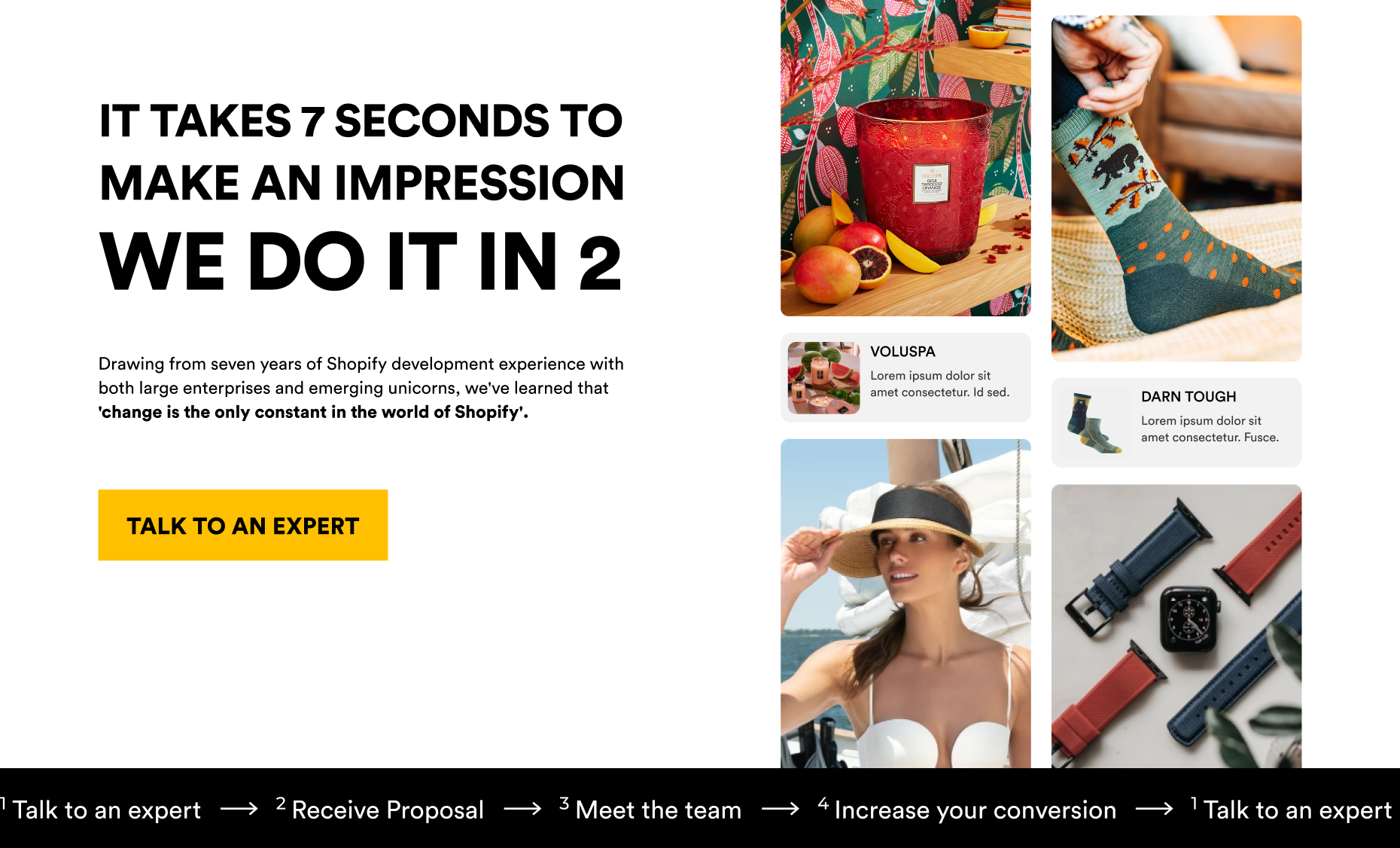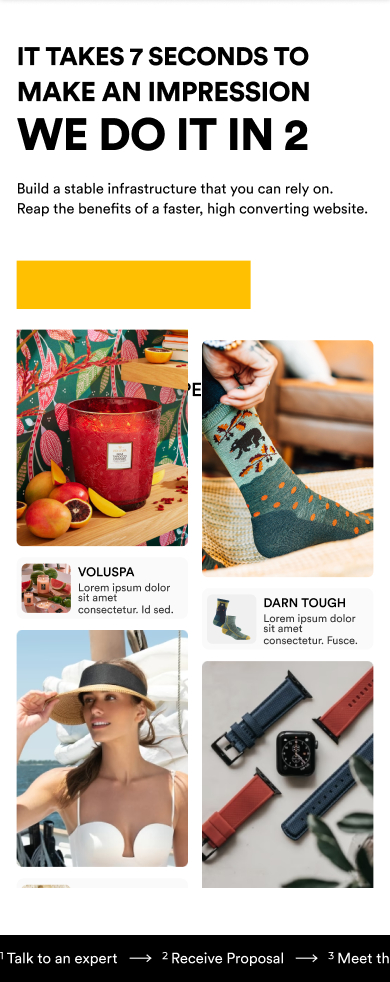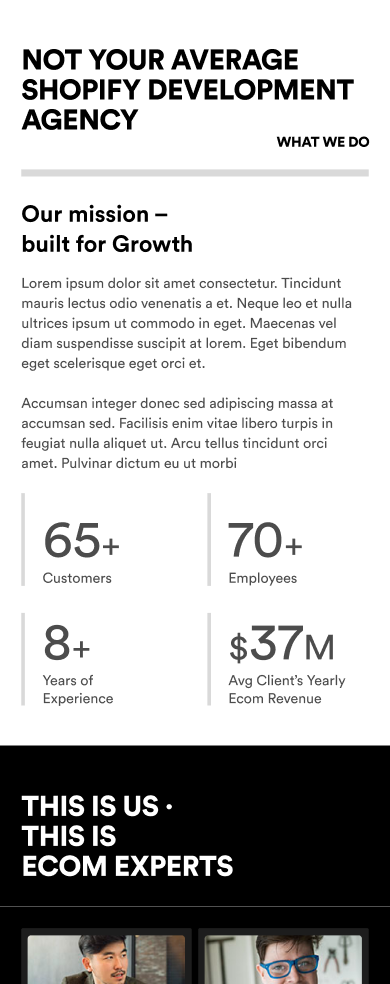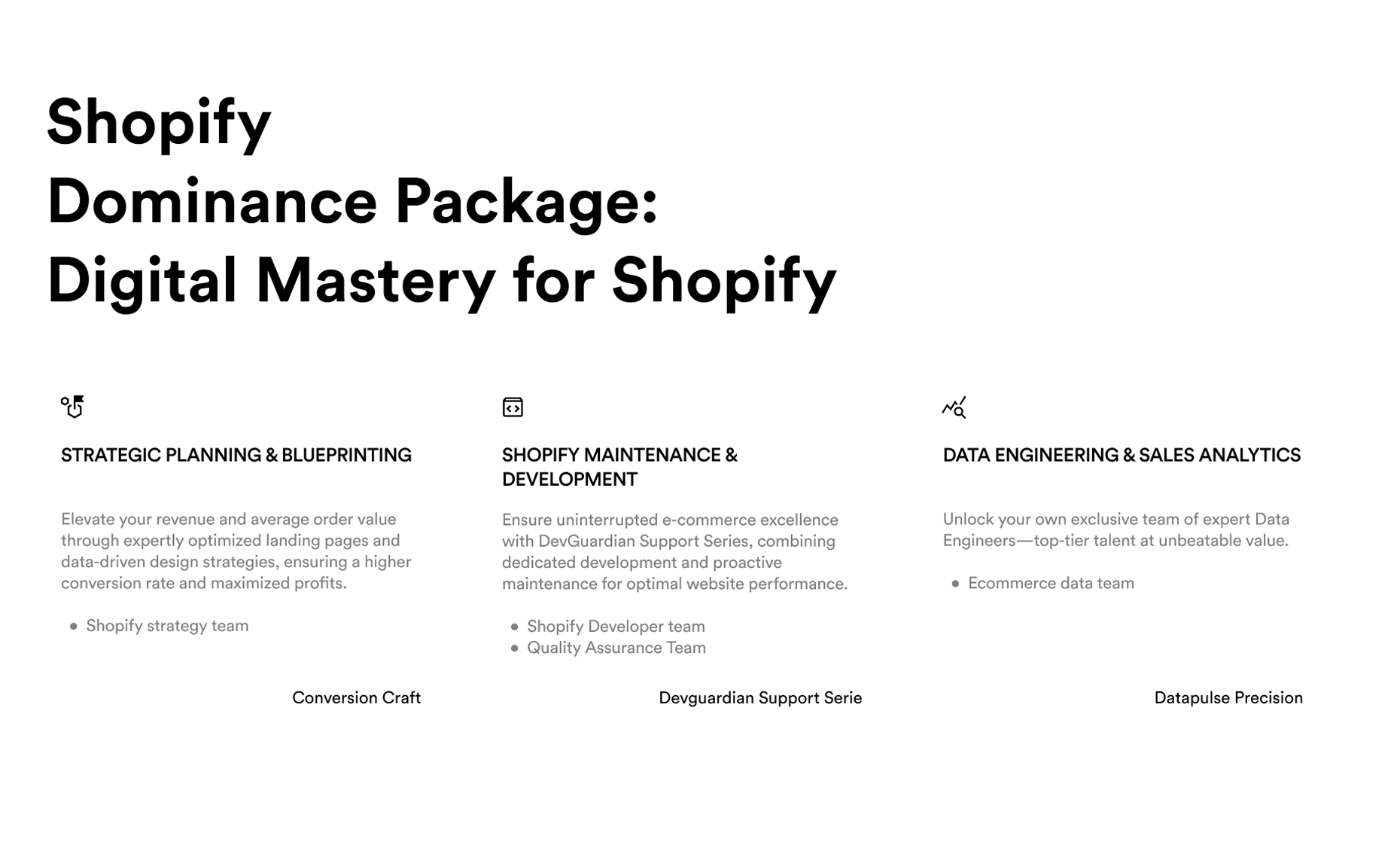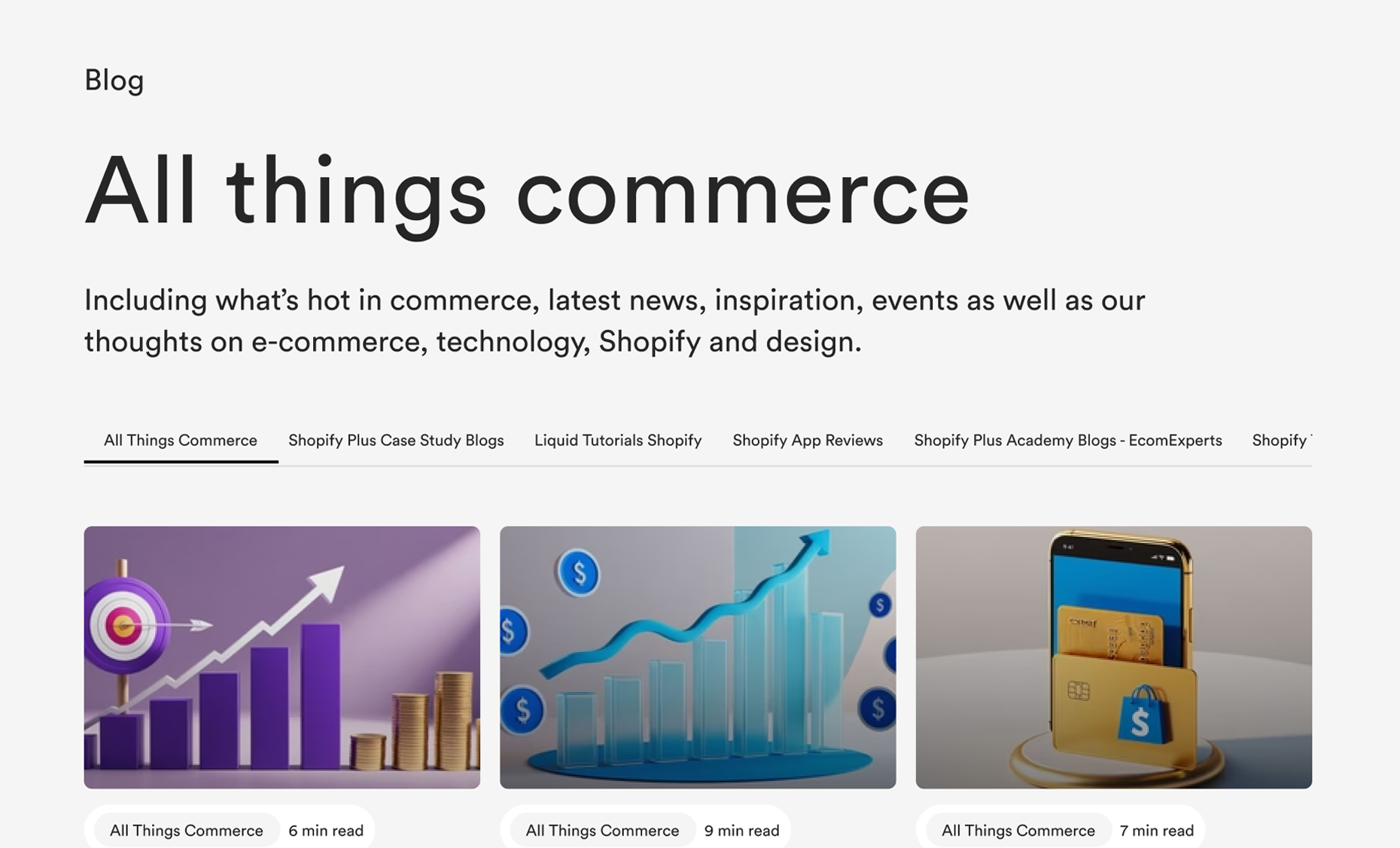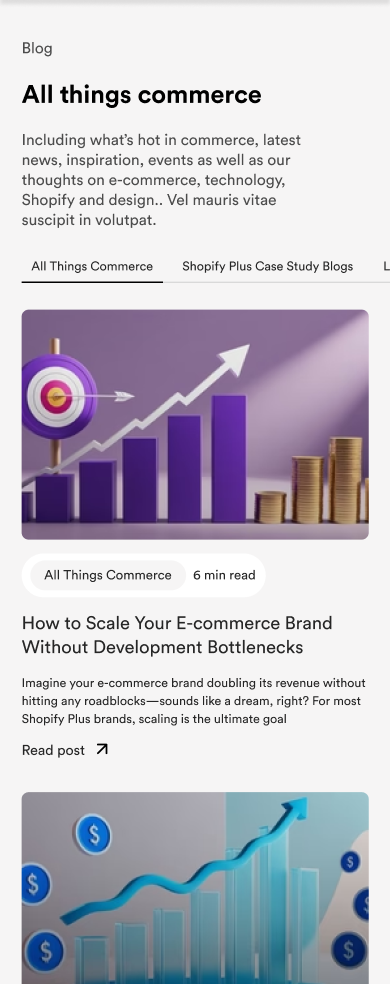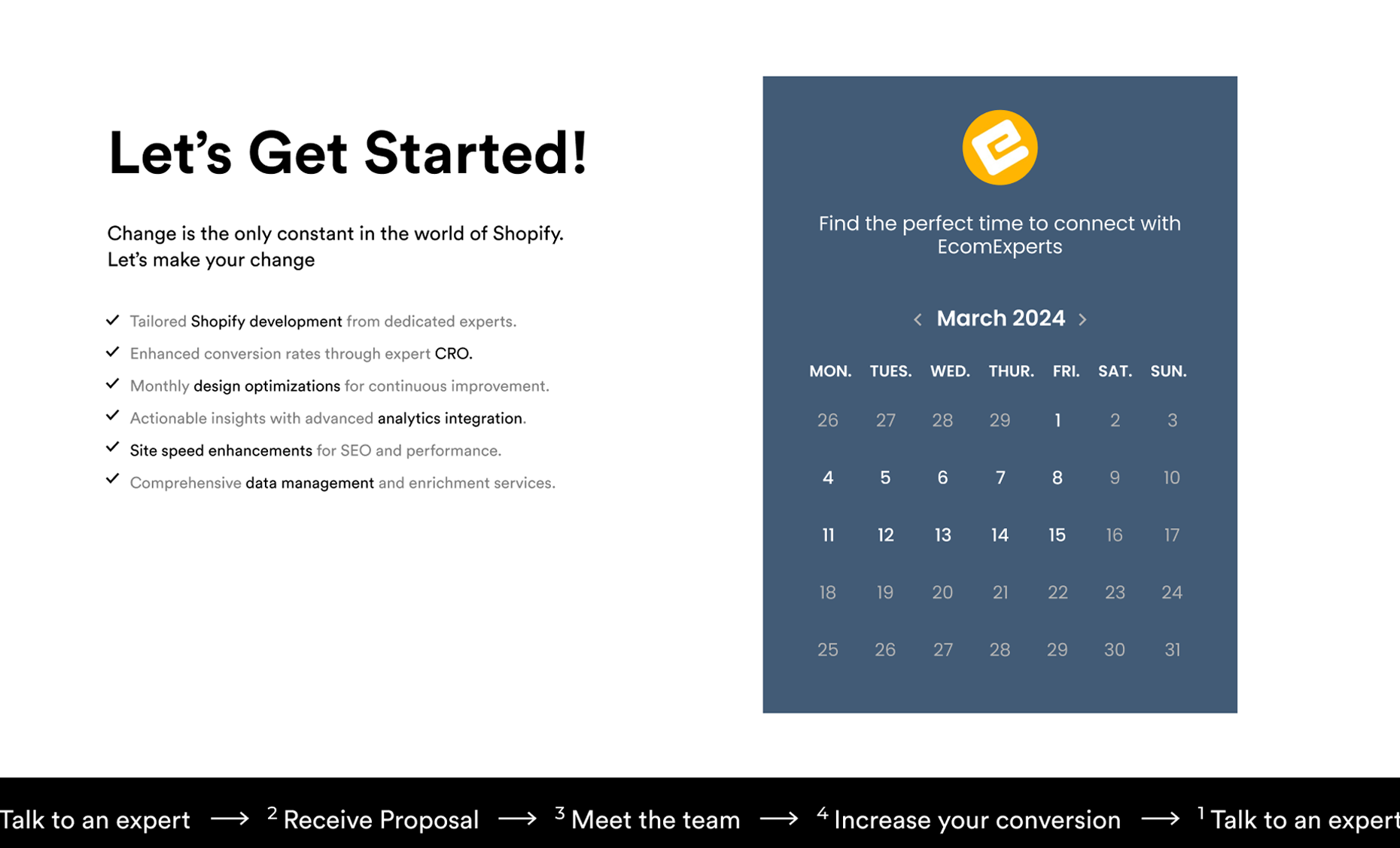Marketers across the globe often lose their spirits when they compare themselves to their competitors. They have to reach for their stress ball as soon as they look at the flocks of leads and revenue their rivals are bringing in.

But they're looking at it the wrong way. You see, your biggest competitor is your own site. That back button and the x icon your prospect clicks on to close the tab - that's your target. Your own website is holding you back and pushing your customers away with either poor design or confusing user experience.
Many marketers wonder what a good conversion rate is. Should your visitors convert at 2%? Or is it 3%?
The answer to this question, as old as the ecommerce itself, is simple. A good conversion rate is the one that's better than the last month's. Getting slightly better each month is pivotal to maintain a strong, profitable website that converts well.
Usually, it's easier to double your conversion rate than it is to double your traffic. Send massive amounts of people to a site that's been poorly designed and it will perform worse than a well-optimized site with only a fraction of that traffic. If you're heavily funding advertising without investing in CRO, you're essentially pouring money down the drain.
Conversion Rate Optimization: Where to Begin?
You want your site to convert better? Optimize it first. In most cases, it will result in more people taking the desired action - whether it's signing up for your newsletter, submitting a form, or making a purchase. Otherwise, the neglected website will take a toll on your income stream.
When starting out, remember to ask yourself the following three questions:
1. How Easy is Your Site to Use?
Your site should be easy to navigate. So easy, in fact, that a drunk person can make a purchase. A fresh set of eyes going through your website is one of the strongest ways to spot barriers that are driving your leads away. We don't recommend you down a bottle of bourbon beforehand but you need to put yourself in your customer's shoes.
Try to buy something off your site yourself. You'll instantly spot roadblocks and potholes that are in the way of making a sale.
At best, your customers know what they're looking for and at worst they're just plain lazy. If they need to think twice even for a second, you'll lose them. Make their user journey as smooth and seamless as possible.
No need to reinvent the wheel or make your website 'pop'. Conventional is good. Conventional makes money. Why do you think ecommerce giants such as Amazon or Zalando do so well? It's because they stick to a plain, simple layout. Remember: good design is invisible.
2. Is Your Site Trustworthy?
Don't forget you're asking people for their credit card details. You're also asking them for their private details such as their name, address, and in some cases, phone number.
These are all highly confidential data. And if you haven't built a reputation on the market yet, your prospects may be wary of shopping through your site. With reason.
We've all seen enough data protection breaches last year to keep our guards up when it comes to sharing our personal data. The GDPR and PECR paved the way for some changes in how websites handle user information and the new European ePrivacy Regulation will most likely tighten these legislations.
This means we should finally bid cookie banners and opt-out pages goodbye. And while such changes will without a doubt make the user experience better, it will be more difficult to gauge audience response via third-party services, such as Google Analytics. We're yet to see how the new digital privacy measures unravel, but one thing is for sure - data protection will have a drastic effect on CRO, and marketers need to place high importance on it.
3. Who am I speaking to?
In e-commerce, quality of traffic means everything. If you're directing the wrong kind of traffic to your site, no amount of conversion rate strategies will help you.
Create personas. Ask yourself: who am I targeting here? Who is my average customer? By creating a fictional representation of your real target audience, you're allowing yourself to better understand your prospects, and that immensely simplifies your user experience optimization.
As Florian Schulze from Compass says: ''If the traffic source is highly relevant, people often come with a strong purchase intent. This is why the average Referral Conversion Rate performs so well.''
We've discussed the importance of traffic sources in our latest article: Website Conversion Rate for E-Commerce Businesses: An in-depth Analysis.
Protip: Go through your Facebook friends list and select a few people you know would buy your product. Then view their profile to find out more about the pages they like, influencers they follow and hobbies they're interested in. You'll be able to better shape your customer persona this way, as you'll know precisely which client group to target.
Don't just sit there admiring your skyrocketing traffic count. There's no point in generating random traffic to your site. Your advertising needs to speak to the right kind of people. And it needs to use the right words. Which gets us to the next section - messaging.
Channel the Desire
Start talking about your product first and you lose your prospect. Try to create desire and the same thing happens. The visitor gets bored and buys from someone else.
That's because they don't have much time on their hands. Your average visitor is busy. He or she has an attention span of no more than 8 seconds. (1)
If you're in SaaS business, chances are the visitor is looking for a more productive way of working. If you're selling clothes, the person behind the screen wants to look sharp, or edgy, or anything in between. The point is, craft your copy so that it communicates that desire and then introduce your product.
As Eugene Schwartz writes in his brilliant book, Breakthrough Advertising:
''Copy cannot create desire for a product. It can only take the hopes, dreams, fears and desires that already exist in the hearts of millions of people, and focus those already existing desires onto a particular product.''
Personalize the Experience
But before you even put your fingers to the keyboard, get to know your customer. That's why we've emphasized the importance of creating the target persona in the previous section. If you don't know who you're talking to, how do you know what you're going to say?
Then you can start crafting your copy. Make use of those power words. Don't let your tagline bore the visitors to death. Use words your customers will understand.
Speak to them in plain, concise English. No need to say apparel when you can say clothing. Also, write in active voice to spark action and proofread your copy. Hemingway App and Grammarly are great free tools when it comes to this.
Make Data-Driven Decisions
Rely on data, not instincts. We're by no means undermining the power of gut instincts. Every good entrepreneur should nurture his or her intuition - it's crucial to running your business successfully.
But when it comes to efficient decision making and conversion rate optimization, nothing beats data analysis. With the rise of business intelligence, marketers have never had a more abundant choice of analytic tools on hand. Here's how you can make the most of your data.
Funnel Analysis
Visitors flow through your website every single day (at least we hope so). Crunch those numbers. Find out what users do on your website. One of the most effective methods in doing so is funnel analysis.
Essentially, your sales funnel (also known as website funnel or conversion funnel) is a cone-shaped representation of your user's journey. It begins with a page visit and ends with a sale.
You can identify your key traffic sources and high-exit pages by taking a closer look at your sales funnel. Google Analytics is one of the most popular tools in tracking consumer behavior and analyzing your funnel.
An ecommerce website funnel at its core looks like this: Homepage > Product Page > Add to Cart > Checkout > Purchase.
Most storeowners would be thrilled with an 8% add to cart rate, 4% checkout and 2% purchase. Basically, this means 8% of all visitors added a product to the cart, 4% went to checkout and 2% bought the product.
Losing half the people between each step is completely normal. However, if you notice a sharp drop in between each funnel phase you need to take action. Let's have a look at some changes you can do to your existing site in order to drive more sales and increase your conversion rate.
1. Effortless Payment Processing
Look into the specific part of your consumer journey that is impeding your sales.
For example, if most of your visitors leave during the checkout page, that means they're probably having a hard time making the purchase. Here are some of the most common reasons why US visitors abandon their checkout page.
The reason #2 is a particularly big one in our line of work. We constantly see clients require an obligatory account creation when they could simply enable guest checkout option to avoid profit losses.
.
Simplify the way your customers pay for their products. The payment process is the final step that has the power to make or break a conversion - keep it smooth and effortless.
Shopify’s built-in payment gateway is fantastic; as Tobi Lutke told us: “Trust the default settings.”
After all they did a lot more A/B testing than we could ever do.
Besides, Shopify offers accelerated checkout options such as PayPal/Apple Pay and Google Pay, all of which make selling products on your website faster, easier and more scalable.
2. Tracking User Behavior
Once you've identified those pages your visitors are most likely to exit, have a closer look at their behavior in each phase.
Heat maps are incredibly useful in visualizing how users engage with your content. You can analyze where visitors spend the most time on a certain page at a glance and optimize their journey following those insights. As we said, a simple navigation through your site is the best way of boosting your conversion rate.
Our team at Ecom Experts is developing a free Shopify heatmap app. Sing up here for early access and a lifetime pro version of this app.
(Source)
Let's have a look at the example below. You can see right away the hot areas on which users are clicking the most. But the icons that receive most clicks lead to nowhere - they're not links at all.
A marketer who can use this heat map to either place an anchor link onto the images or remove them altogether. This in turn, makes the user experience smoother and will likely result in more conversions.

A similar, yet a more precise method is session recording. These tools allow you to see the cursor path of your user on your entire website. Focus on those low-performing pages and see exactly where your visitors are leaving it.
Pay close attention to how people scroll through, interact with buttons and engage with content on your pages. You'll be able to pinpoint the exact bottlenecks that are impeding their journey and will better understand your audience.
3. A/B Testing
Experiment with your strategies. Compare two versions of your site to determine which one is producing better results.
This is one of the most effective data-driven approaches you can take to optimize your conversion rate. The difference between your page A and page B can be as minor as changing a single button or as radical as a complete redesign.
Discover what works for your business and go with whatever option is converting better. There are no limits to A/B testing; you can compare landing pages, ads, emails...or whatever funnel has the most traffic coming in.
Here's a five-step process to A/B testing you can utilize today to drive more sales.
(Source)
What About Mobile?
Optimizing conversion rates for mobile means double the work. And as laborious as it may sound, focusing on your mobile UI is highly important, too. Even though mobile accounts for only a third of desktop conversions, it appears to be the sales vehicle of the future.
(Source)
The big reason why mobile is still behind desktop when it comes to sales is simple - shopping through your phone can be dull and tedious.
Not to mention insecure. You wouldn't really want to enter your card details over a mobile network, let alone take your wallet out on a metro to double check those numbers .
Smartphones have smaller screens and are usually slower than laptops and desktop computers. That is not to say, however, that you can't make a noticeable change by making improvements in your mobile strategy.
It all depends on your business. Fire up Google Analytics to see what devices people are using to visit your site. Make a note of the 5 most popular devices people buy your products with and run the website through each of them.
Go down the list, make changes where changes are due and soon enough you'll end up with an enhanced mobile user interface. You can either invest in physical devices to do so our use virtual tools that mimic the shopping experience on each device.
Protip: Minimize your mobile content and make compact version of your site to speed up loading times. As mentioned in our previous article that dealt with average conversion rates, people get easily distracted when on mobile and leave your site in a flash. But when they're sitting in front of their desktop at the end of the day, a little ad re-targeting can go a long way in prompting them to go back and make that purchase.
Branded Packaging
Finally, custom packaging appears to be an important part of a product, according to 68% of surveyed online shoppers. (2)
It gives your customers a sense of excitement and makes your business look more upscale.
Therefore, if you want to stand out from the crowd in 2019, make sure you offer custom packaging for your products, as this seems to be a promising strategy of making your brand more recognizable and respected.

Drive More Sales with Ecom Experts
We'll also wrap up our article with final 10 pointers you should have in mind when trying to optimize your conversion rate and scale your online business.
The list doesn't end here, though. There are multiple other conversion rate optimization trends gaining traction in 2019. From dropshipping to list building and dynamic marketing, new CRO strategies are emerging by the day.
If you'd like us to help you increase your conversion rate, you can reach us at support@ecomexperts.io. We will give our best to have a look at your site with a set of fresh eyes, trained to spot mistakes that are standing in your way to success.
----------------


